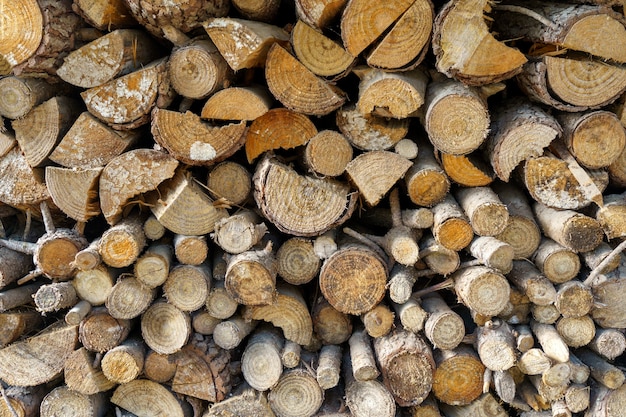Is wood pellet grilling healthy?
Wood pellet grilling has gained popularity in recent years as a convenient and versatile way to cook delicious meals outdoors. But amidst all the excitement, many people wonder if this method of grilling is truly healthy. In this article, we will explore the various aspects of wood pellet grilling and its potential impact on your health.
The basics of wood pellet grilling
Wood pellet grilling involves using a specially designed grill that burns compressed wood pellets as fuel. These pellets are made from hardwood sawdust, often sourced from sustainable forestry practices. The grill is equipped with a digital controller that allows you to set the desired temperature and ensures consistent heat throughout the cooking process.
One of the key advantages of wood pellet grilling is that it imparts a unique smoky flavor to the food being cooked. This comes from the combustion of the wood pellets, which release aromatic compounds that infuse into the meat, fish, or vegetables. The versatility of wood pellet grills also allows for a wide range of cooking techniques, from slow smoking to high-temperature searing.
Health benefits of wood pellet grilling
Wood pellet grilling offers several health benefits compared to other cooking methods. Firstly, it allows for precise temperature control, ensuring that your food is cooked evenly and thoroughly. This can be particularly important when grilling meats, as it helps to eliminate any potential bacteria or pathogens that may cause foodborne illnesses.
Another advantage of wood pellet grilling is its ability to retain moisture in the food. The smoke produced during the cooking process helps to seal in the natural juices, resulting in moist and succulent dishes. This can be especially beneficial when grilling leaner cuts of meat that tend to dry out easily.
Furthermore, wood pellet grilling promotes healthier cooking practices by minimizing the need for added fats or oils. The natural flavors from the wood pellets enhance the taste of the food, reducing the reliance on heavy sauces or marinades. This can be a great option for individuals who are conscious of their calorie intake or following specific dietary guidelines.
Potential considerations
While wood pellet grilling offers numerous health benefits, there are a few potential considerations to keep in mind. One is the formation of carcinogenic compounds when fats from the food drip onto the hot grill grates. These compounds, known as polycyclic aromatic hydrocarbons (PAHs), can be minimized by keeping the grill clean and using drip pans or foil to catch drippings.
Another aspect to consider is the type of wood pellets used in the grilling process. Some woods, such as mesquite or hickory, have stronger and more intense flavors, which may not be suitable for individuals with respiratory conditions or sensitivities. It is worth experimenting with different wood varieties to find the ones that suit your taste preferences and health needs.
Expert tip: It’s recommended to use wood pellets that are specifically labeled as food-grade or BBQ-grade, as these are manufactured with quality and safety standards in mind.
Lastly, it’s important to maintain proper food handling and cooking practices when using any grilling method. Ensure that meats are cooked to the appropriate internal temperature to eliminate any potential bacteria, and always handle raw and cooked foods separately to avoid cross-contamination.
In conclusion
Wood pellet grilling can be a healthy and enjoyable way to prepare delicious meals outdoors. With precise temperature control, moisture retention, and reduced need for added fats, it offers several advantages over traditional grilling methods. However, it’s important to be mindful of potential considerations such as the formation of carcinogenic compounds and the choice of wood pellets. By following proper cooking practices and considering individual health needs, wood pellet grilling can be a flavorful and nutritious addition to your culinary repertoire.
Does burning wood pellets produce more CO2 than coal?
Burning wood pellets has gained popularity as a renewable energy source in recent years. However, there has been some debate about whether burning wood pellets produces more CO2 emissions compared to burning coal. Let’s take a closer look at the factors involved.
1. Carbon emissions
Wood pellets are made from compressed sawdust and other wood residues, which are considered carbon-neutral since the carbon dioxide released during combustion is roughly equal to the carbon absorbed by the tree during its lifetime. Coal, on the other hand, is a fossil fuel and burning it releases carbon that has been trapped underground for millions of years.
According to the UK government’s Renewable Heat Incentive (RHI), wood pellet combustion produces 0.018 kilograms of CO2 per kilowatt-hour (kgCO2/kWh) of heat produced, while coal combustion produces around 0.35 kgCO2/kWh. This means that burning wood pellets produces significantly less CO2 emissions compared to burning coal.
2. Efficiency
The efficiency of burning wood pellets versus coal also plays a role in determining CO2 emissions. Wood pellets generally have a higher energy content and burn more efficiently than coal, resulting in fewer emissions per unit of heat produced.
A study conducted by the European Commission found that modern wood pellet heating systems can achieve higher efficiencies (up to 95%) compared to typical coal-fired power plants (around 30-40%). This means that burning wood pellets can contribute to reducing overall CO2 emissions.
3. Other environmental considerations
While burning wood pellets can help reduce CO2 emissions compared to coal, it is important to consider other environmental factors. Harvesting and processing wood for pellets can have localized environmental impacts, such as deforestation or soil degradation. However, sustainable forestry practices and the use of wood residues can minimize these concerns.
Overall, burning wood pellets produces significantly fewer CO2 emissions than burning coal, thanks to its renewable nature and higher combustion efficiency. When sourced and produced sustainably, wood pellets can contribute to reducing greenhouse gas emissions and transitioning towards a more sustainable energy future.
Is Burning Wood Pellets Bad for the Environment?
Wood pellets have gained popularity as a renewable energy source in the UK, but there are concerns about their impact on the environment. While burning wood pellets can be a carbon-neutral alternative to fossil fuels, it is essential to consider various factors to determine their overall environmental impact.
Renewable Energy Source
Burning wood pellets is considered a renewable energy source because trees can be replanted to replace the harvested ones. The carbon dioxide emitted during combustion is offset by the amount absorbed by new trees, making it a carbon-neutral process. However, the sustainability of wood pellet production depends on responsible forestry practices and efficient supply chains.
Forest Management
Responsible forest management plays a crucial role in ensuring the sustainability of wood pellet production. Forests must be managed for long-term health and biodiversity, with the use of certified sustainable forestry practices. This involves replanting trees and maintaining the overall ecosystem to minimize the impact on wildlife habitats.
Efficiency and Emissions
Burning wood pellets in modern, efficient stoves and boilers can significantly reduce emissions compared to traditional wood-burning methods. According to a study by the Biomass Energy Resource Center, using wood pellets instead of fossil fuels can result in a 90% reduction in greenhouse gas emissions. However, it is important to ensure that the combustion process is optimized to minimize air pollutants like particulate matter and nitrogen oxides.
Transportation and Supply Chain
The environmental impact of wood pellets also depends on the transportation and supply chain involved. It is best to source wood pellets locally to reduce transportation emissions. Additionally, ensuring a well-maintained supply chain that minimizes wastage and ensures efficient production can further reduce the environmental footprint of wood pellet usage.
Using wood pellets as a renewable energy source can be environmentally beneficial, but it requires responsible forest management, efficient combustion processes, and well-managed supply chains.
In conclusion, burning wood pellets can be an environmentally friendly alternative to fossil fuels if sourced responsibly and used in efficient systems. However, it is crucial to consider the entire lifecycle of wood pellets, including forestry practices, emissions, and transportation, to minimize their overall impact on the environment.
Are Wood Pellets Really Carbon Neutral?
Wood pellets have gained popularity as a renewable energy source, particularly in the UK where they are used for heating homes and generating electricity. However, there is an ongoing debate about whether wood pellets are truly carbon neutral, as their production and transport can have significant environmental impacts.
The Carbon Footprint of Wood Pellet Production
While wood pellets are made from a renewable resource – typically waste wood or sustainably managed forests – the process of manufacturing them requires energy. The carbon footprint of wood pellet production includes emissions from logging, transportation, drying, and pelletizing. Additionally, the use of heavy machinery in forestry operations emits greenhouse gases.
According to a study by Chatham House, wood pellets can have higher carbon emissions than coal in the short term due to these production processes. However, over the long term, wood pellet combustion is considered carbon neutral because trees absorb carbon dioxide as they grow, offsetting the emissions from burning them.
Transportation and Sustainability
Transporting wood pellets also contributes to their overall carbon footprint. As the majority of wood pellets used in the UK are imported, typically from North America, long-distance shipping can result in significant emissions. However, there are efforts to minimize transportation emissions by increasing the use of local sources and using more efficient shipping methods.
Environmental Considerations
While wood pellets may be considered carbon neutral from a climate change perspective, it is important to consider their broader environmental impact. The sourcing of wood for pellets can lead to deforestation if not properly managed. Sustainable forestry practices are crucial to ensure the long-term viability of wood pellet production.
“Sustainable forest management is key to maintaining the carbon neutrality of wood pellet production.”
Additionally, the production of wood pellets may have other environmental implications, such as impacts on water quality and wildlife habitats. It is crucial to monitor and regulate the industry to mitigate these potential risks.
Conclusion
While wood pellets have the potential to contribute to renewable energy goals and reduce carbon emissions, their carbon neutrality should be evaluated in the context of their entire life cycle. Sustainable sourcing, efficient transportation, and responsible forest management are essential for ensuring that wood pellets remain a viable and environmentally friendly energy option in the UK.



